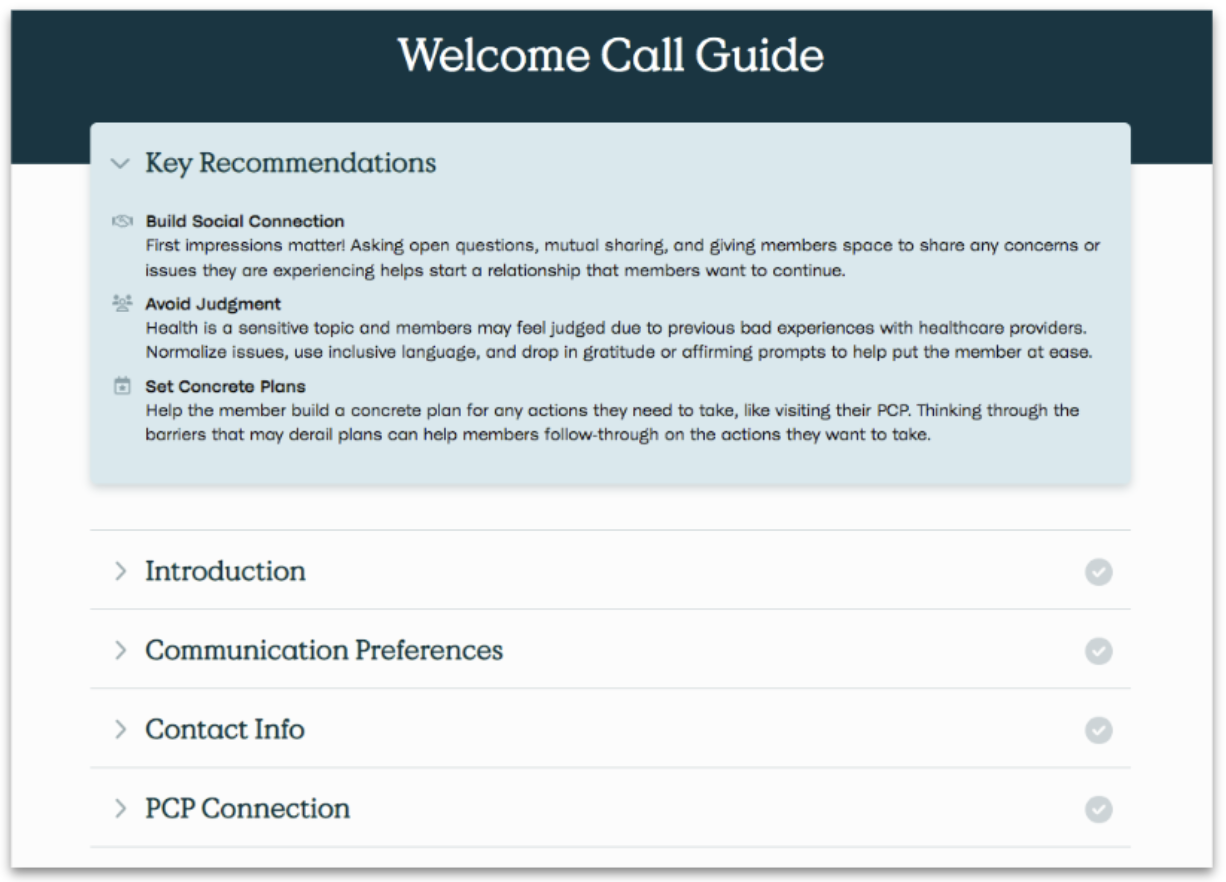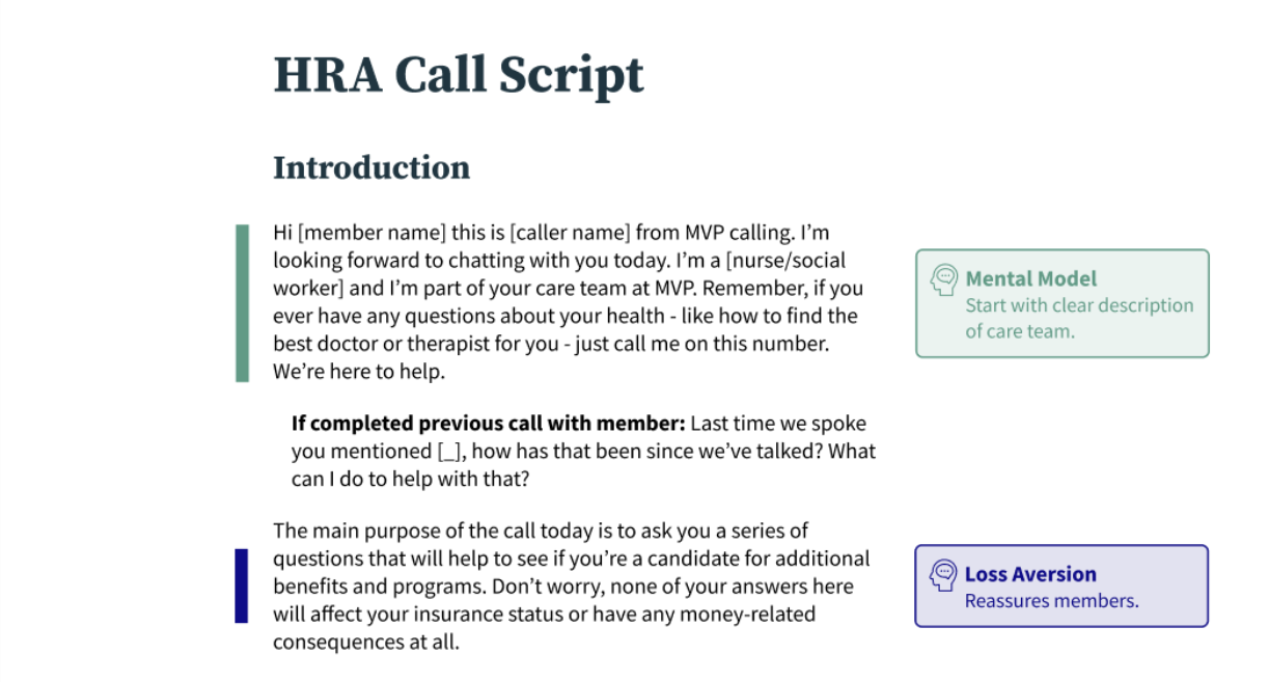The Challenge: Increasing New Patient Engagement With Belong Health Care Teams
Irrational Labs partnered with Belong Health to tackle one of their most important challenges – increasing new patient engagement with Belong care teams – which include social workers, nurses, and community health workers.
We took a behavioral science microscope to the new patient experience, focusing on three touchpoints: (1) the welcome call, (2) health risk assessment, and (3) primary care provider connection.
Our Approach
We uncovered dozens of behavioral barriers around these touchpoints that could add friction and interfere with care team engagement. Then we designed a suite of interventions to directly remove these barriers.
For example, we found that the initial welcome call could last more than 2 hours and included both sensitive and confusing topics. The challenge was to create a script for welcome calls that would promote downstream engagement and was compliant with the regulated Model of Care. We streamlined the call script – focusing on the clear benefits of the plan and building social connection with patients.
Interventions
Interactive Welcome Call Guide
Based on this insight, we collaborated with the care teams to develop a simple, interactive guide featuring behavioral interventions throughout. This new solution maintains compliance with the regulated Model of Care and offers seasoned care team members a behavioral version of the checklist approach. We included science-backed strategies for building social connections and discussing sensitive topics such as mental health, loneliness, and substance use.

Welcome Call Guide for Belong Care Teams
Personalized Welcome Postcard
We designed a postcard to help humanize the care team for members with the goal of increasing engagement with the care team. We included friendly photos of care team members – reducing ambiguity about who they are (since most initial interactions are conducted via phone).
We made the postcards highly personalized – featuring messages from each care team member to the member themselves (e.g. “Hi Shayna, I’m looking forward to working with you…”).
We used language such as “your care team”, leveraging the endowment effect and aiming to help people understand that this is their custom care team, here to support them. And also to feature small fun, facts about themselves to increase relatability and encourage social connection. Further, we helped to build a simple mental model of what the care team is by featuring a clear list of things that the care team can help them with.
HRA Script
We redesigned the HRA script used by care team members to conduct a lengthy health risk assessment for new members. While the HRA is a helpful source of data for Belong, the assessment can take over an hour. In addition, it includes questions that are difficult to answer and can be stigmatizing.
To solve this, we redesigned the script to prioritize the most important questions. We leveraged several strategies to address stigma and negativity bias, including building social connection, social norms, positive affirmation, and positive psychology/small wins.
For example, we recommended care team members start the call with a trust-building exchange and provided specific prompts. Specifically, they were prompted to lead members through a reciprocal disclosure exercise where both the care team caller and member took turns sharing small things about themselves with one another.
Before difficult questions about mental health, we recommended including a positive affirmation question “Could you please tell me three good qualities or strengths other people around you would say you have? Things like kindness, good with change, directness. Whatever comes to mind. These don’t have to be related to health at all.”
We framed a section with questions about physical abilities with a normalization of all abilities: “It’s very normal for people to have difficulty doing certain activities.”
We user-tested the script and collaborated heavily with care team members. To ensure that care team members understood our rationale for certain recommendations and framings – we included behavioral science bubbles throughout the script that highlight the behavioral science justifications for the design element. As with all other interventions, we made sure the script remained compliant with the regulated Model of Care.

Zooming Out: Further Interventions and Future Focus
Zooming out – these are just three of the 10+ interventions we developed with Belong. Others included text messages, a redesigned health risk assessment, and a mailer. All of these targeted various barriers to increased patient engagement with Belong’s care team.
Our work with Belong isn’t over. We are partnering again, this time to tackle the flip side of the problem – provider engagement.
——————————–
Want to learn more about this work, or to partner with us to leverage behavioral science to solve your toughest healthcare problems? Contact us at [email protected].
